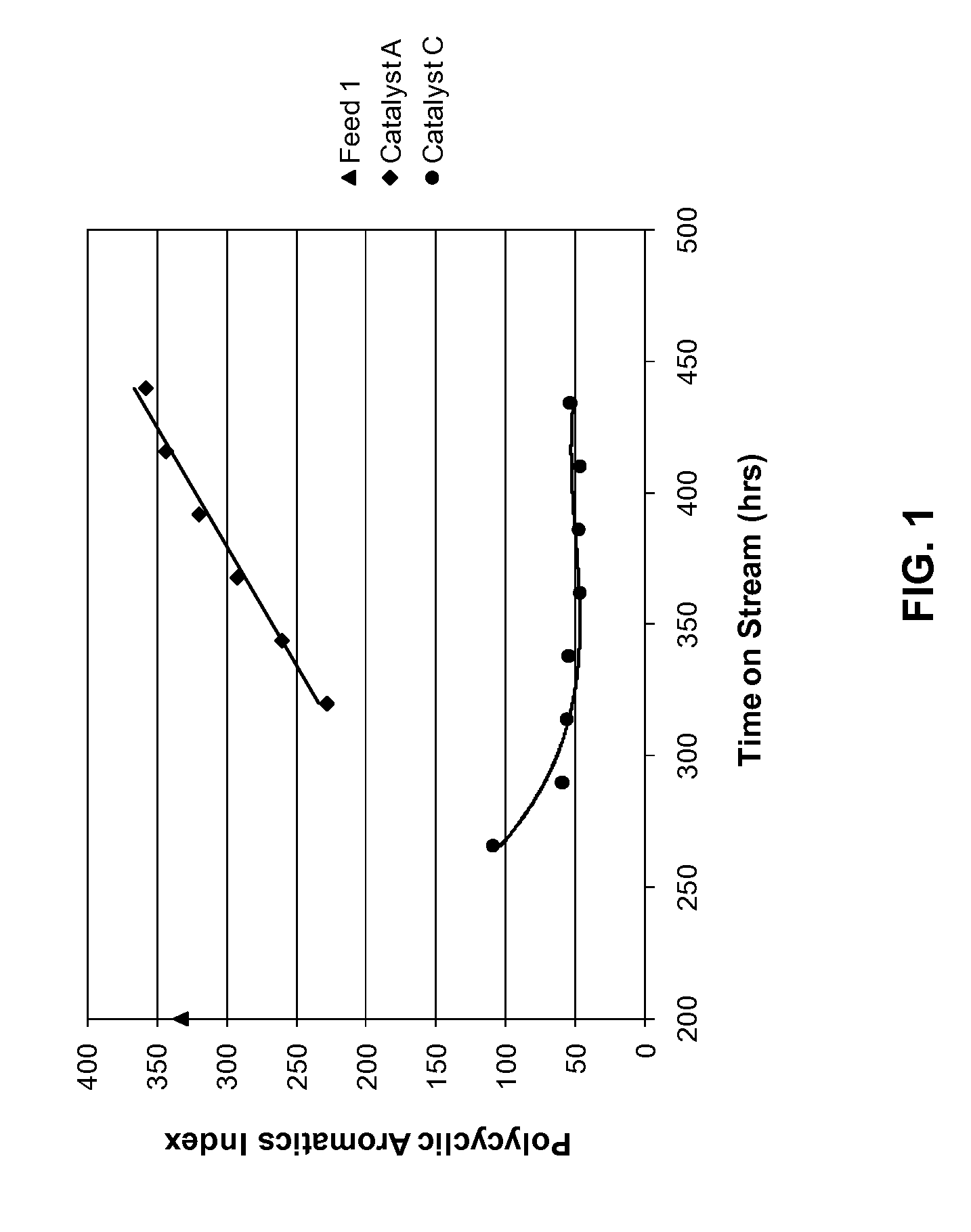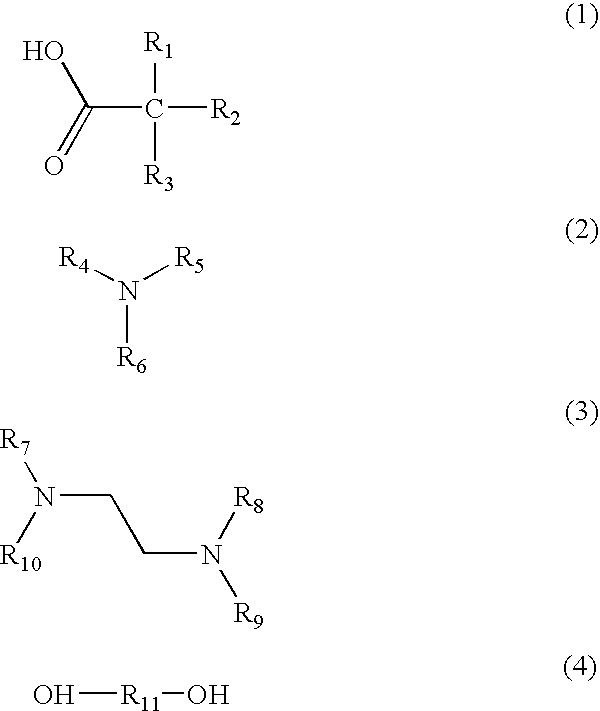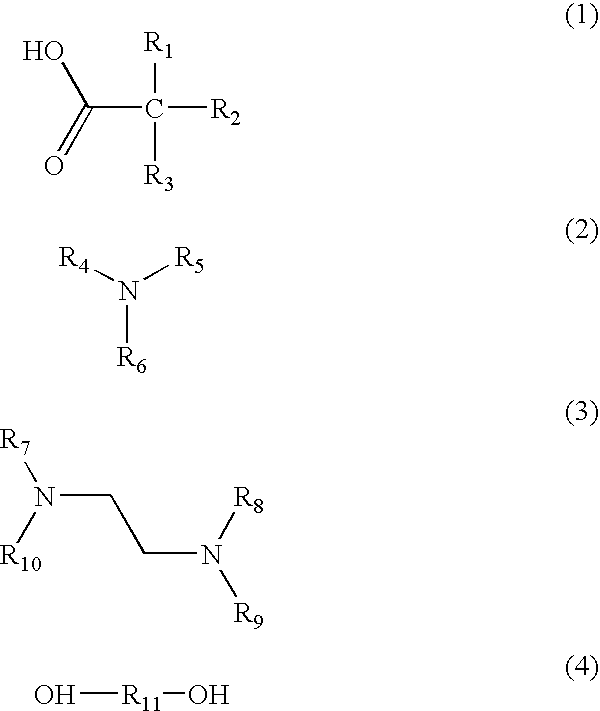Hydroprocessing catalyst and method of making the same
a technology of hydroprocessing catalyst and catalyst, which is applied in the direction of hydrocarbon oil treatment products, physical/chemical process catalysts, organic compounds/hydrides/coordination complex catalysts, etc., can solve the problems of high variability of hydroprocessing catalyst activity, selectivity and/or stability effects
- Summary
- Abstract
- Description
- Claims
- Application Information
AI Technical Summary
Benefits of technology
Problems solved by technology
Method used
Image
Examples
example 1
Catalyst A—Comparative Hydrocracking Catalyst
[0095]A comparative hydrocracking catalyst was prepared per the following procedure: 67 parts by weight silica-alumina powder (obtained from Sasol), 25 parts by weight pseudo boehmite alumina powder (obtained from Sasol), and 8 parts by weight of zeolite Y (from Tosoh) were mixed well. A diluted HNO3 acid aqueous solution (1 wt. %) was added to the mix powder to form an extrudable paste. The paste was extruded in 1 / 16″ asymmetric quadrilobe shape, and dried at 250° F. (121° C.) overnight. The dried extrudates were calcined at 1100° F. (593° C.) for 1 hour with purging excess dry air, and cooled down to room temperature.
[0096]Impregnation of Ni and W was done using a solution containing ammonium metatungstate and nickel nitrate in concentrations equal to the target metal loadings of 4 wt. % NiO and 28 wt. % WO3 based on the bulk dry weight of the finished catalyst. The total volume of the solution matched the 103% water pore volume of the ...
example 2
Catalyst B—Modified Hydrocracking Catalyst
[0097]A modified Ni / W hydrocracking catalyst was prepared using extrudates prepared with the same formulation as that for Catalyst A. Impregnation of Ni and W was done using a solution containing ammonium metatungstate and nickel nitrate in concentrations equal to the target metal loadings of 4 wt. % NiO and 28 wt. % WO3 based on the bulk dry weight of the finished catalyst. 2-Hydroxy 1,2,3-propanetricarboxylic (used as a modifying agent), in an amount equal to 10 wt. % of the bulk dry weight of the finished catalyst, was added to the Ni / W solution. The solution was heated to above 120° F. (49° C.) to ensure a completed dissolved (clear) solution. The total volume of the metal solution matched the 103% water pore volume of the base extrudates (incipient wetness method). The metal solution was added to the base extrudates gradually while tumbling the extrudates. When the solution addition was completed, the soaked extrudates were aged for 2 h...
example 3
Catalyst C—Modified Hydrocracking Catalyst
[0098]Catalyst C was prepared by further calcination of a sampling of Catalyst B at 842° F. (450° C.) for 1 hour.
PUM
| Property | Measurement | Unit |
|---|---|---|
| temperature | aaaaa | aaaaa |
| temperature | aaaaa | aaaaa |
| temperature | aaaaa | aaaaa |
Abstract
Description
Claims
Application Information
 Login to View More
Login to View More - R&D
- Intellectual Property
- Life Sciences
- Materials
- Tech Scout
- Unparalleled Data Quality
- Higher Quality Content
- 60% Fewer Hallucinations
Browse by: Latest US Patents, China's latest patents, Technical Efficacy Thesaurus, Application Domain, Technology Topic, Popular Technical Reports.
© 2025 PatSnap. All rights reserved.Legal|Privacy policy|Modern Slavery Act Transparency Statement|Sitemap|About US| Contact US: help@patsnap.com



